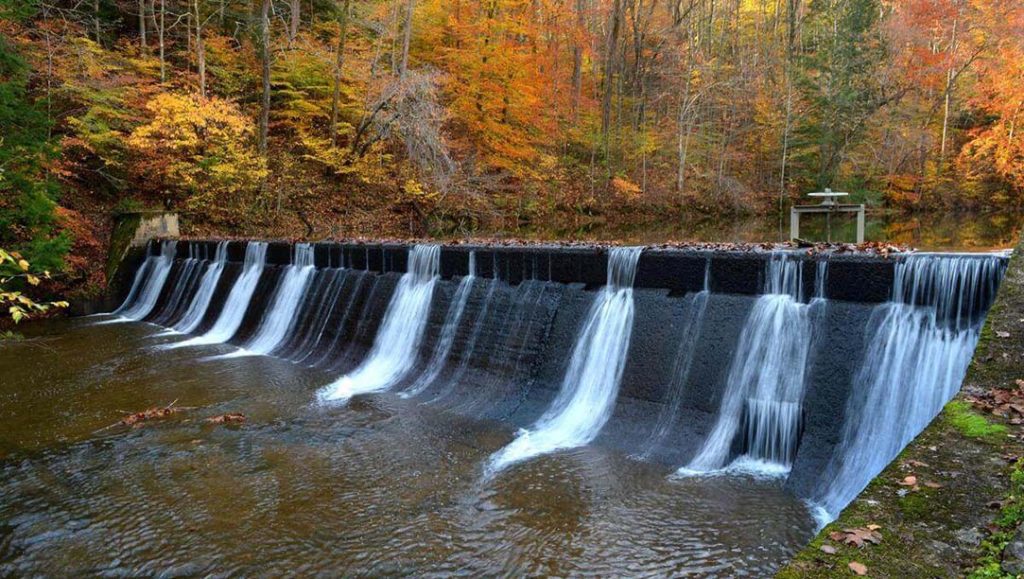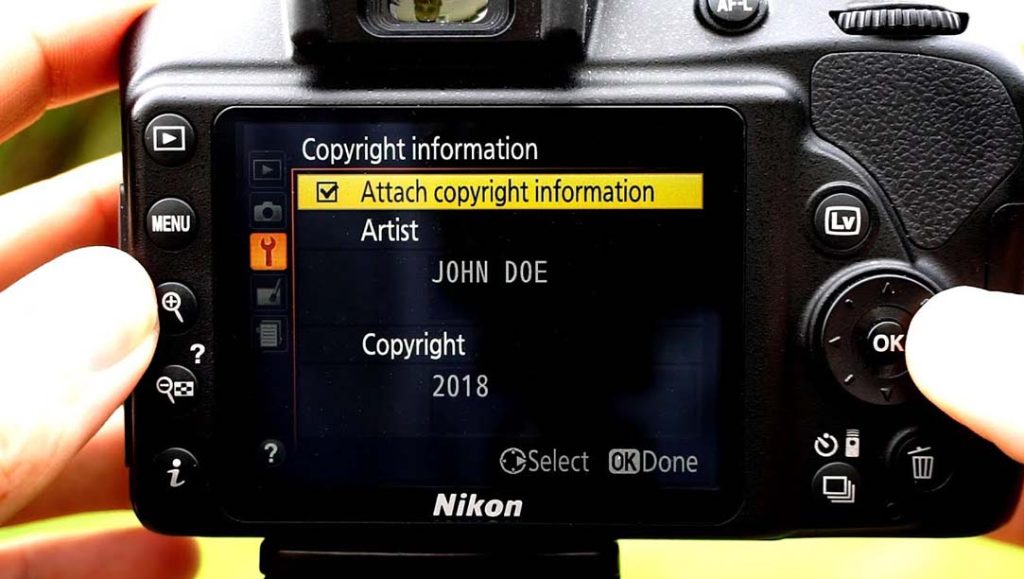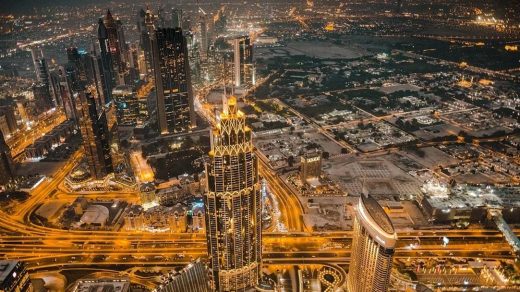Charleston, West Virginia, is a city that has left an indelible mark on my memory. Its unique blend of history, architecture, and natural beauty make it a remarkable destination for photographers. I will share my personal experiences and offer insights into the best photography spots in Charleston. From the iconic State Capitol to the tranquil Haddad Riverfront Park, Charleston is a city that invites photographers to explore its diverse visuals.
The Charm of Charleston
Charleston is a city where history, culture, and nature converge. As I roamed its streets and parks, I discovered a wealth of photographic opportunities that cater to all styles and interests. Whether you’re an amateur photographer with a smartphone or a seasoned pro with a DSLR, Charleston has something to offer everyone.
Essential Photography Spots
Capitol Street: A Walk Through Time
Capitol Street is a microcosm of Charleston’s charm and history. The well-preserved architecture and bustling street life create a captivating setting for photography. I found myself engrossed in capturing the intricate details of the facades, candid moments of locals, and the interplay of light and shadow that danced across the cobblestone streets.
Photography Tip: The best times to capture the street’s essence are early mornings and late afternoons when the soft, warm light enhances the colors and textures of the buildings. Don’t hesitate to experiment with angles to showcase the street’s vibrant character.
Haddad Riverfront Park: Where Water Meets Serenity
For those seeking a serene retreat, Haddad Riverfront Park is the place to be. Overlooking the Kanawha River, the park provides a perfect backdrop for sunrise and sunset photography. The calm waters of the river mirror the skies, creating breathtaking reflections that are a delight for any photographer.
Photography Tip: To capture the tranquility of the riverfront, I recommend using a tripod during the golden hours of sunrise and sunset. This allows for longer exposure shots that bring out the park’s peaceful ambiance. The iconic gazebo is a fantastic focal point for your compositions.
Historic East End: Victorian Splendor
The Historic East End of Charleston is a hidden gem for photographers. The neighborhood boasts well-preserved Victorian-era homes and vibrant facades that seem frozen in time. Walking these streets, I felt like I had stepped into a bygone era, and my camera was my time machine.
Photography Tip: This area is a haven for street photography. While capturing the neighborhood’s timeless beauty, always be respectful of the residents and request permission if you plan to photograph their homes up close. The best time to visit is on sunny days when the colors pop and details shine.
State Capitol Building: A Beacon of Grandeur
The West Virginia State Capitol is a symbol of the state’s heritage and an architectural masterpiece. Its symmetrical design and towering dome create an aura of grandeur that photographers can’t resist.
Photography Tip: Explore the capitol’s surrounding gardens and pathways to discover unique angles and compositions. Try to capture the building’s reflection in the surrounding fountains for an artistic and creative shot.
Kanawha State Forest: A Natural Oasis

If you have a passion for capturing the beauty of the great outdoors, a visit to Kanawha State Forest is a must. The forest offers hiking trails, lush greenery, and the chance to immerse yourself in West Virginia’s natural landscapes.
Photography Tip: Be prepared for changing lighting conditions within the forest. The soft, dappled light during early mornings and late afternoons is ideal for capturing the enchanting atmosphere of the forest.
My Photography Essentials
When I set out on my photography adventure in Charleston, I made sure to pack the right gear to capture the city’s beauty. Here are some essential items I carried and tips I followed:
1.The Right Camera Gear:
- Camera Selection: I brought my trusty DSLR for its versatility and excellent image quality. However, today’s smartphones also offer remarkable camera capabilities, making them a suitable choice for those who prefer a lighter setup.
- Clean Equipment: It’s crucial to ensure your camera and lenses are clean and free from dust or smudges before you start shooting. A microfiber cloth is handy for quick clean-ups during your adventure.
Lenses for Versatility:
- Wide-Angle Lens: I opted for a wide-angle lens to capture the sweeping landscapes and cityscapes of Charleston. This lens allowed me to include more of the scene in my frames, creating a sense of space and depth.
- Prime Lens: For more detailed shots and portraits, I carried a prime lens with a wide aperture. It enabled me to achieve a beautiful background blur (bokeh) while keeping the subject sharp.
The Sturdy Tripod:
- Tripod Selection: Charleston’s diverse photography spots, including low light environments, made a tripod an indispensable companion. I chose a sturdy and lightweight tripod for stability and portability.
- Low Light Photography: A tripod is essential when shooting during low light conditions, such as at sunrise or sunset. It prevents camera shake, allowing for longer exposures and sharper images.
Remember, the right gear can significantly enhance your photography experience and help you capture the moments in Charleston beautifully. Whether you’re using a professional camera or your smartphone, having clean equipment, versatile lenses, and a reliable tripod will set you on the path to photography success.
2.Mastering the Art of Lighting
In the heart of Charleston, capturing the city’s essence through my lens required a keen understanding of lighting. Here’s how I harnessed the magic of light during my photography adventure:
Lighting Matters:
- Embracing Golden Hours: One of the key aspects of my photography strategy in Charleston was to take full advantage of the golden hours. The first hour after sunrise and the last hour before sunset bathe the city in the most enchanting, soft, and warm light. The gentle, golden hues create a dreamy atmosphere that makes Charleston’s streets and landscapes truly come alive.
- Harnessing Overcast Days: On overcast days, I discovered a different kind of beauty in Charleston’s architecture and people. The cloudy skies acted like a giant softbox, diffusing the light evenly across the city. This diffused light was a blessing for portrait photography, eliminating harsh shadows and creating a flattering, natural look. It was also ideal for capturing the intricate details of the city’s historic buildings.
Charleston’s ever-changing light offered me a fantastic playground for photography. I found that by timing my shots during the golden hours and embracing overcast days, I could add a touch of magic to my photographs. Each moment was an opportunity to create images that encapsulated the city’s unique charm, and I seized every one of them.
3. Composition Techniques:
- Embracing the Rule of Thirds: One of the fundamental rules I followed was the “Rule of Thirds.” This technique involves mentally dividing your frame into thirds both horizontally and vertically, creating a grid of nine equal parts. To achieve well-balanced compositions, I strategically placed my subjects or points of interest along these gridlines.
- Guiding with Leading Lines: Charleston’s picturesque streets and architecture offered me a canvas rich in natural and architectural lines. I used these leading lines to guide the viewer’s eye through my photographs. Whether it was a cobblestone street drawing the eye towards a charming building or a meandering pathway leading to a tranquil park, the use of leading lines added a dynamic quality to my compositions. These lines created a sense of movement and depth, making the viewer feel like they were a part of the scene.
These composition techniques served as my creative tools, allowing me to convey the beauty and essence of Charleston through my photographs. By incorporating the Rule of Thirds and embracing leading lines, I was able to transform everyday scenes into captivating visual stories that beckon viewers to explore the charming city with me.
4. Camera Settings:

- Aperture Priority: One of the settings I frequently adjusted was the aperture. Using the Aperture Priority mode allowed me to have control over the depth of field in my photographs. When I wanted to isolate a subject and create a beautiful background blur, I opted for a wide aperture, which corresponds to a small f-number (e.g., f/1.8). This created a dreamy and ethereal quality in my images. Conversely, when I aimed to capture sharp landscapes or architectural details, I chose a narrow aperture (e.g., f/11 or higher) to ensure everything from foreground to background was in sharp focus.
- ISO Mastery: Charleston’s various lighting conditions meant I had to be mindful of my camera’s sensitivity settings. I kept my ISO as low as possible to minimize noise in my photos, especially during daylight shooting. Lower ISO settings resulted in cleaner and more vibrant images. However, when faced with low-light situations or capturing motion at dusk, I adjusted the ISO to maintain proper exposure without compromising image quality.
- Shutter Speed Versatility: Charleston’s dynamic scenes offered numerous opportunities for experimenting with shutter speed. When I wanted to freeze action, such as capturing people in motion or birds in flight, I opted for faster shutter speeds. On the other hand, when I desired to convey a sense of motion or create stunning water effects, I slowed down the shutter speed. This added a beautiful motion blur to my images, giving them a touch of artistic flair.
Adapting my camera settings to the specific situation was vital in bringing out the beauty of Charleston.
5. Editing Tools:
- Harnessing Photo Editing Software: Charleston’s picturesque scenes were captivating on their own, but a little post-processing magic could make them truly exceptional. I utilized photo editing software to enhance my images. By adjusting exposure, contrast, colors, and sharpness, I could fine-tune my photos to reflect the vibrancy and charm of the city.
- Mobile Apps for On-the-Go Editing: For quick edits while on the move, I relied on mobile editing apps. These handy tools allowed me to make immediate adjustments to my smartphone photos.
Post-processing was the final step in my photographic journey in Charleston. It allowed me to transform my raw captures into polished gems that truly showcased the city’s allure. By adjusting and enhancing various aspects of my photos, I could bring out the best in each image, making them vivid, dynamic, and ready to share with the world.
Photography Etiquette
Responsible and respectful photography is essential when exploring Charleston:
- Respect Private Property: If you wish to photograph someone’s home or property up close, always ask for permission.
- Mind the Environment: Leave no trace and avoid damaging or disturbing natural areas.
- Consider the People: If you’re taking photos of people, request their consent, be considerate, and avoid intruding on their privacy.
Getting Around Charleston
Charleston is a walkable city, and many photography spots are within a short distance of each other. However, if you need to travel longer distances, consider renting a car or using rideshare services. Public transportation is also available for convenient city travel.
Charleston, West Virginia, invites photographers to explore its rich visual tapestry. From historic streets to tranquil riverfronts and vibrant forests, the city offers a diverse range of subjects waiting to be captured. Remember to pack the right gear, pay attention to lighting, and respect the environment and the people you encounter.


